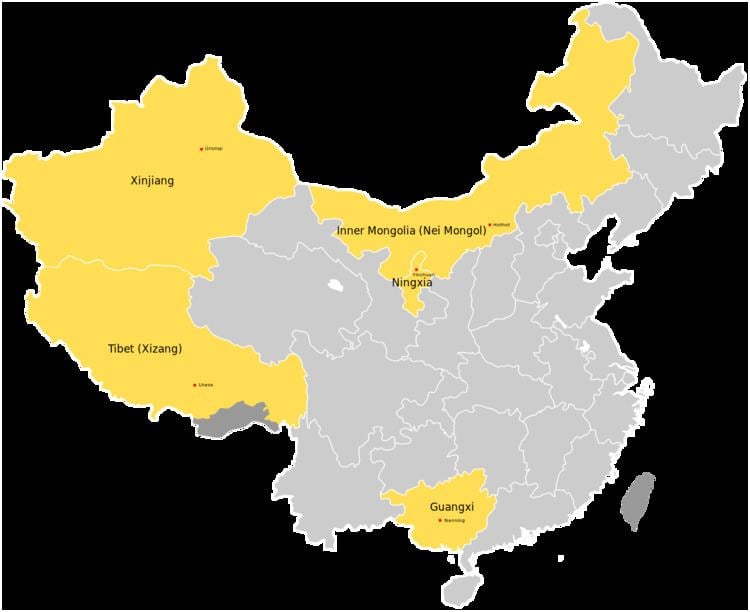Category Unitary State | Number 5 | |
 | ||
Location People's Republic of China Government Single-party government | ||
An autonomous region (AR; Chinese: 自治区; pinyin: zìzhìqū) is a first-level administrative subdivision of China. Like Chinese provinces, an autonomous region has its own local government, but an autonomous region has more legislative rights. An autonomous region is a minority entity which has a higher population of a particular minority ethnic group.
The Inner Mongolia autonomous region was established in 1947; Xinjiang was made autonomous in 1955; Guangxi and Ningxia in 1958, and Tibet in 1965. The designation of Guangxi and Ningxia as Zhuang and Hui autonomous areas, respectively, was bitterly protested by the local Han Chinese, who made up two-thirds of the population of each region. Although Mongols made up even less than a percentage of Inner Mongolia, the ensuing Chinese Civil War gave little opportunity for protest.
Ethnic composition of Autonomous Regions (%, 2000)
Note: In the "Third Largest Ethnic Group" column is the ethnic group given in brackets, after the names of the autonomous regions and Han people.
